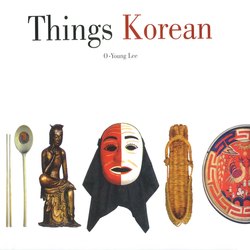Читать книгу Things Korean - O-Young Lee - Страница 17
На сайте Литреса книга снята с продажи.
ОглавлениеProductive Sickle
Nat and Homi
There is a popular expression describing the illiterate as one who "can't recognize the first letter of the alphabet even with a sickle in his hands." This originates in the fact that the first letter of the Korean alphabet (pronounced, by the way, between k and g) is the same in veiled L as the sickle.
In spite of its sharp blade, the sickle could never he used as a weapon in attacking another person. Its blade is bent inward. Misuse the sickle, and it is you. not someone else, who is going to feel its bite. It will act like a boomerang when put in motion, which renders it inefficient, to say the least, as a weapon.
In the West, with its nomadic origins, the blades of farming implements are generally turned outward. The plow, resembling the spear so much in form, would l)e representative of western farming implements. Considering this plow, it is clear how easily the western fanning implement can he turned into a weapon.
And so it is that the West has its "Grim Reaper, the angel of death carrying that dreadful scythe. Then there is the sickle in the Russian flag, which has the dual character of a utensil used in everyday life and an aggressive weapon which can just as well he wielded by the masses in revolt.
Koreas farming implements, on the other hand, have nothing of the nature of any weapon. Their blades turn inward. If the projecting blade of the spear or the sword were turned inward, it loo would become a farming implement.
In addition to form, let us consider how the implement works. In the West it is swung outward, like a sword, while the Korean swings it inward. The Korean scythe, rake, and hand hoe are all good examples of this.
Let us look a hit closer at the Korean hand hoe and sickle, which present us with an interesting comparison. From the Koryo dynasty (918-1392 A.D.) comes the song “Yearning, which employs a comparison of the blunt hand hoe and the sharp sickle as a metaphor expressing the idea that, while the mother and father are both parents, the father-represented in this song by the hoe-nevertheless does not give as much love to his children as the mother does. So this metaphor implies that the hoe is not as effective as the sickle. The working part of both the hoe and the sickle is what we might regard as the blade, because the one cuts the earth and the other cuts vegetation. The hoes blade, though, does not cut as well as the sickles.
Indeed, there is this difference between the hoe and the sickle; hut upon closer observation, we can see it as a difference of six of one or a half dozen of another. The hoe can be every bit as dangerous as the sickle. Its blade, as blunt as it is, turns inward, and a really good swing could wreak as much grief on the foot as a sickle could. Moreover, we could just as easily turn this comparison around: the sickle can be made to appear every bit as harmless as a hoe, for if we were to bend the sickle in at just a little sharper angle, we would have a hoe.
To say that the hoe is potentially destinctive, though, is not to say that it actually is destructive. On the contrary, it is used to nurture life, by heaping up the earth around each seedling. Further, for any object to be destructive, its power must be directed outward. But the hoe does not do this. It nurtures and concentrates its power by directing this power inward. It directs its power toward the root, toward itself, consolidating it.
Does this mean that the sickle, which in order to perform its function of reaping must cut, is destructive? Hardly. In cutting, the sickle contributes to maintenance of natures cycle of growth. The sickle is a steel cocoon which shows how a lethal weapon can be turned into a cultivator of life.
No, the sickle and the hoe are not opposites, no more than they are destructive.
There used to be many a Korean farmer who could not see the first letter of the alphabet even with a sickle in his hands. But there was not a one who did not know the fact that, no matter how sharp and threatening the blade may appear to another, the sickle and hoe are, if anything, more dangerous to the one using it than to anyone else.
The beauty of the sickle and the hand hoe is that, even if raised in confrontation or threat, the glinting blade is pointing inward towards the heart of the one holding it.
